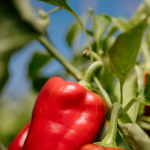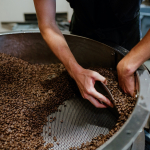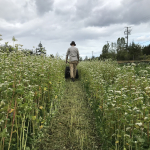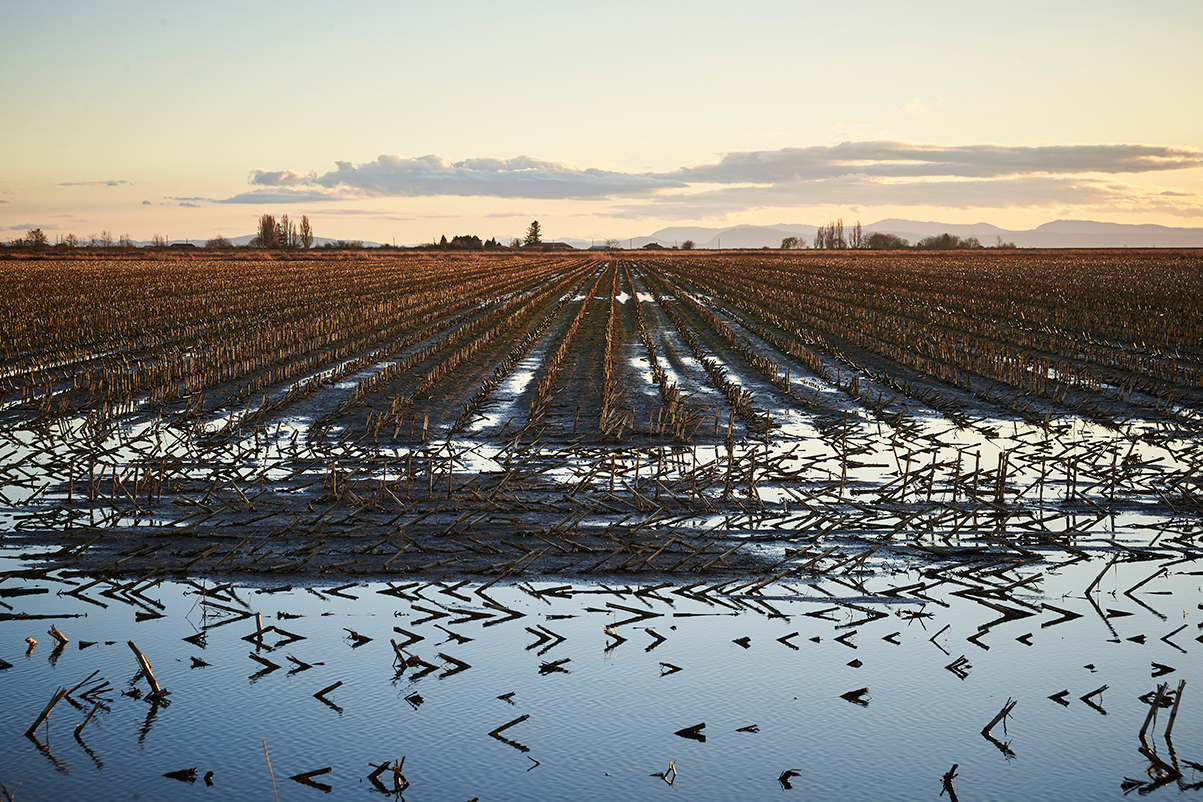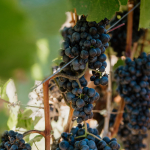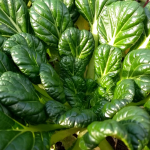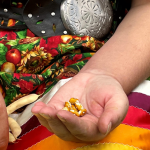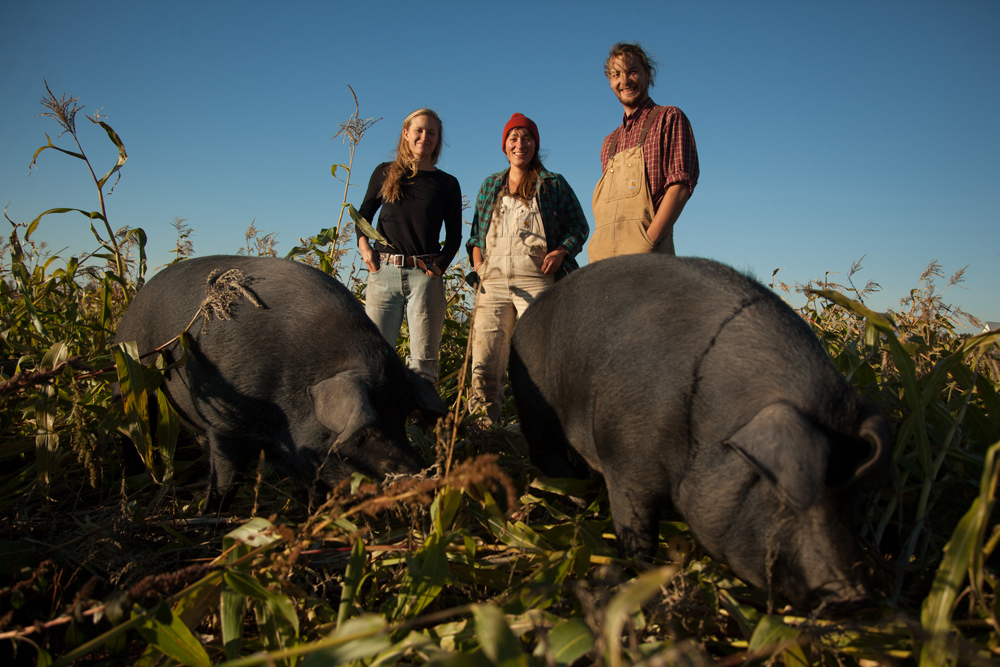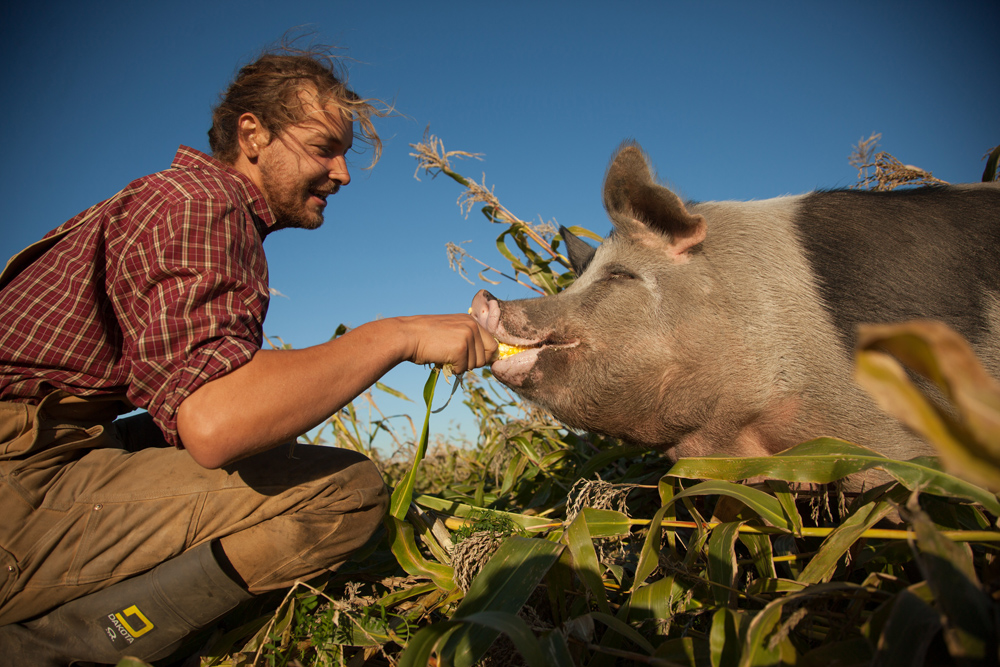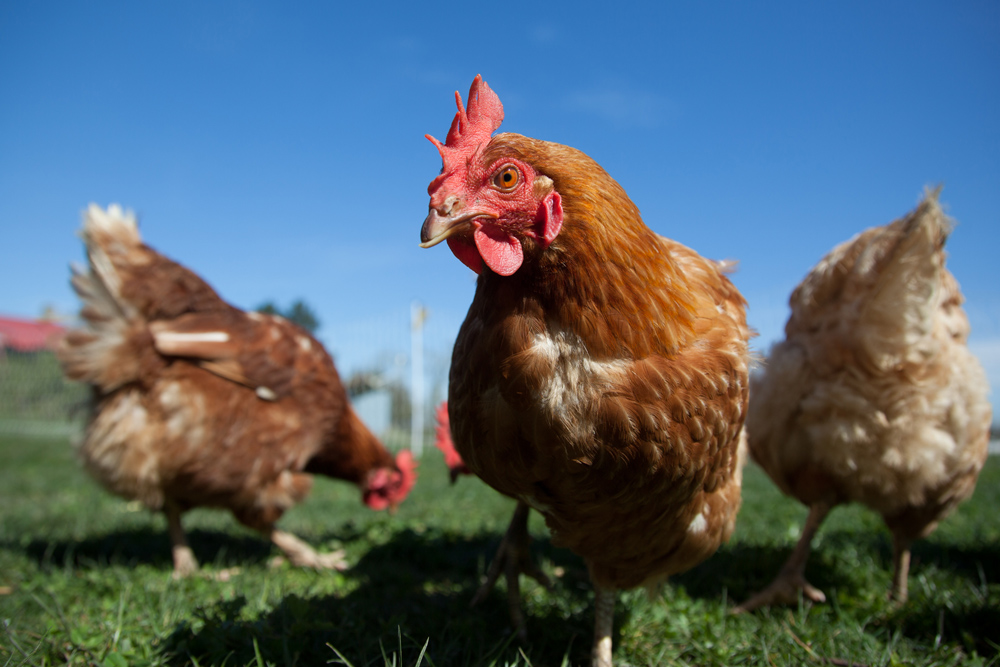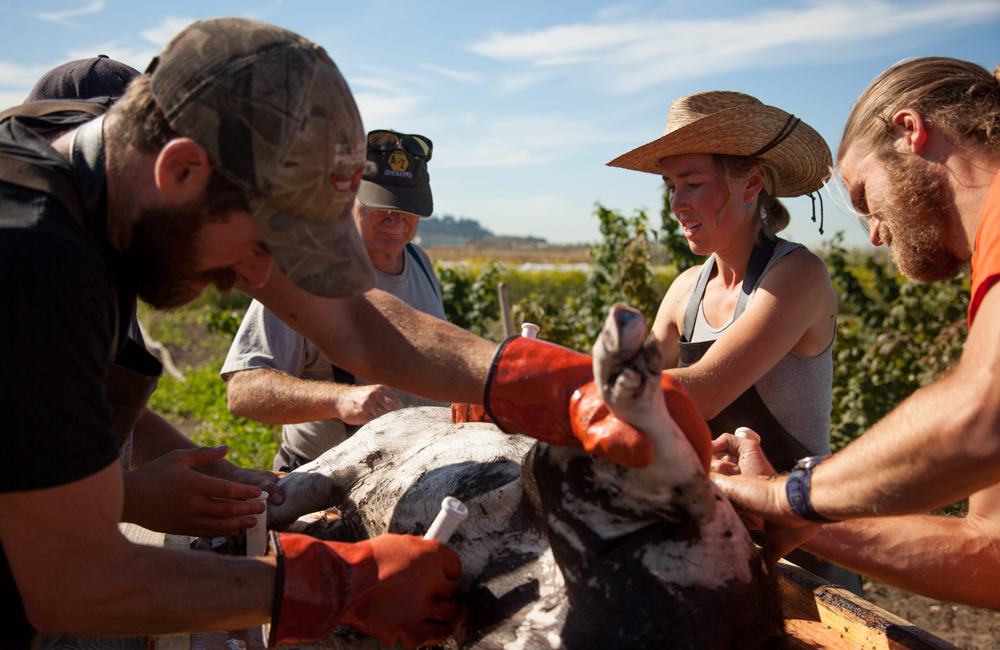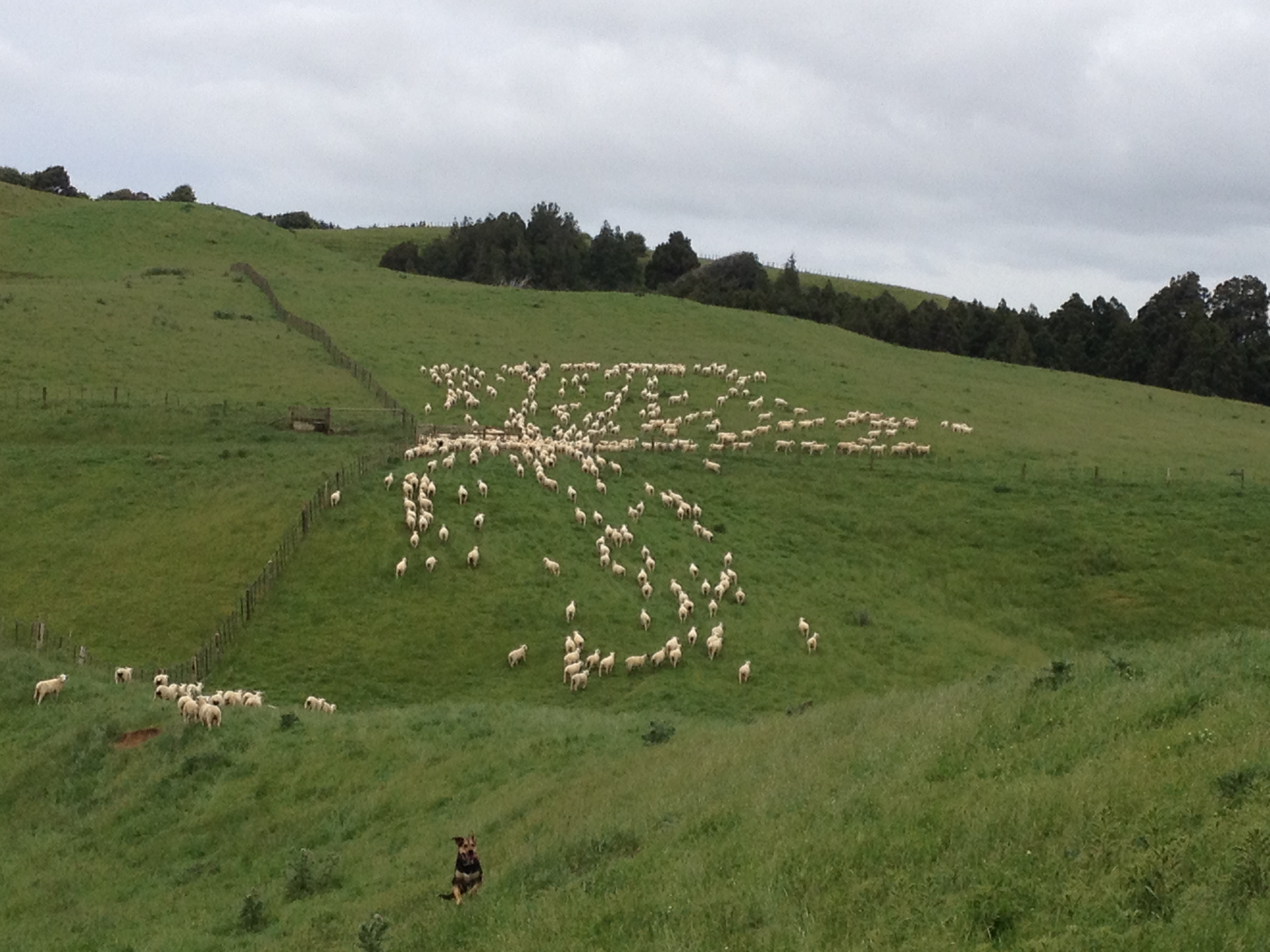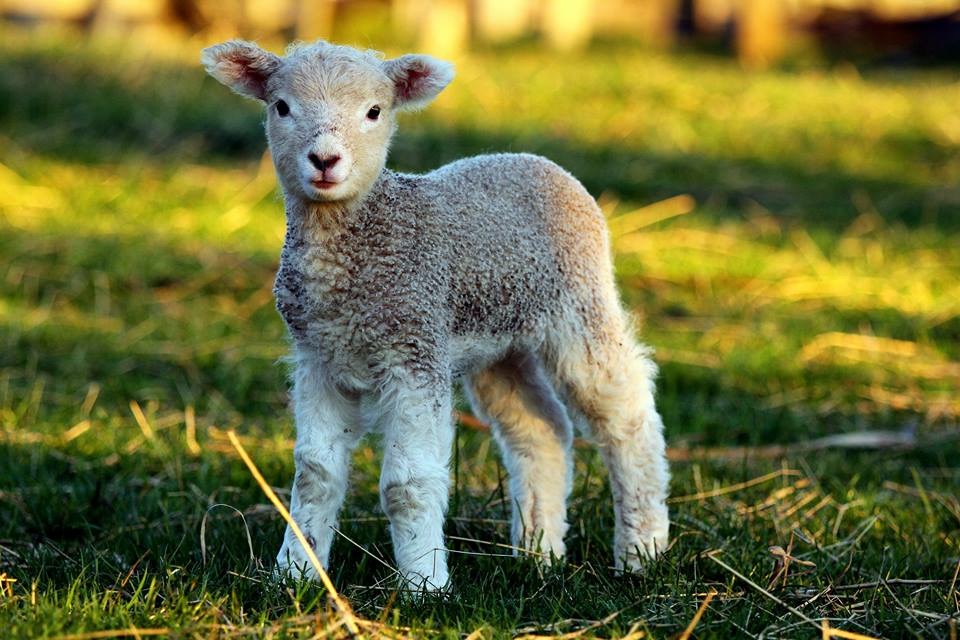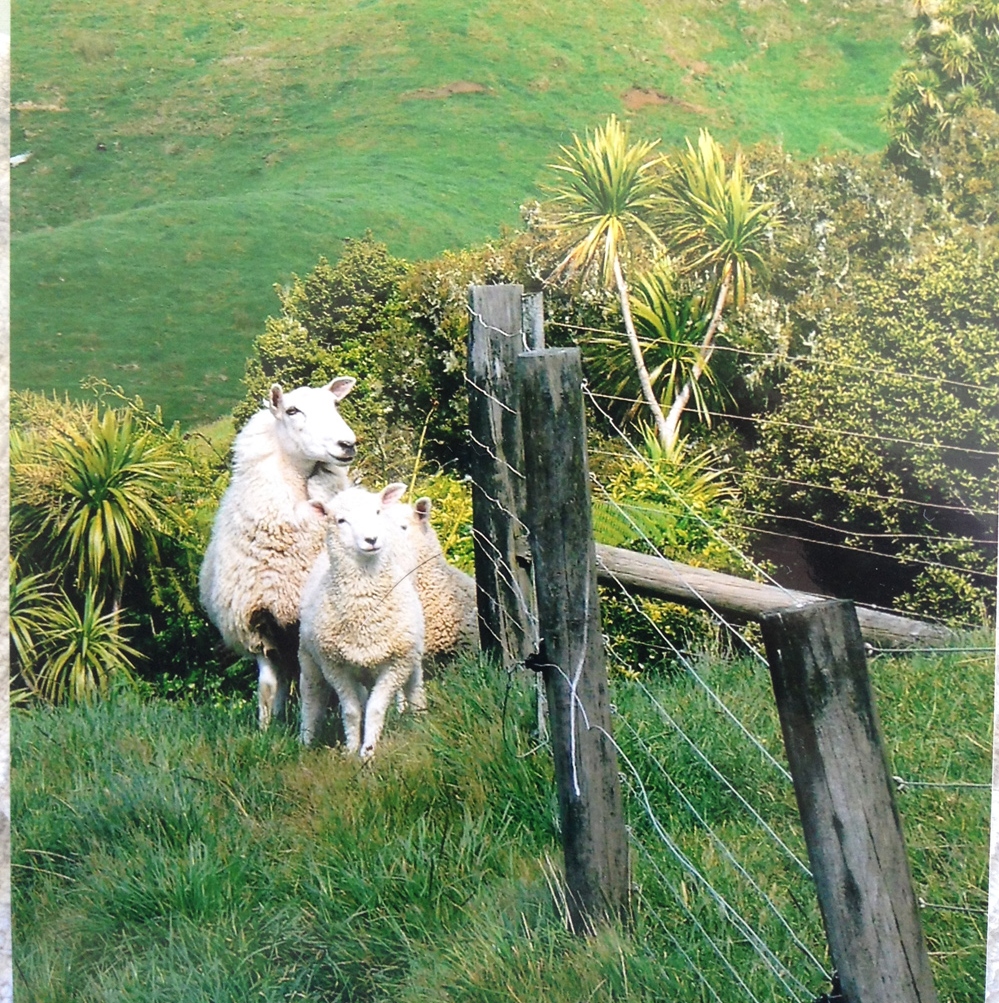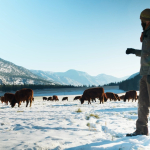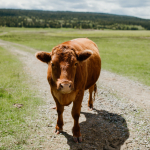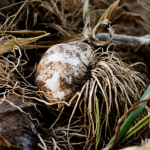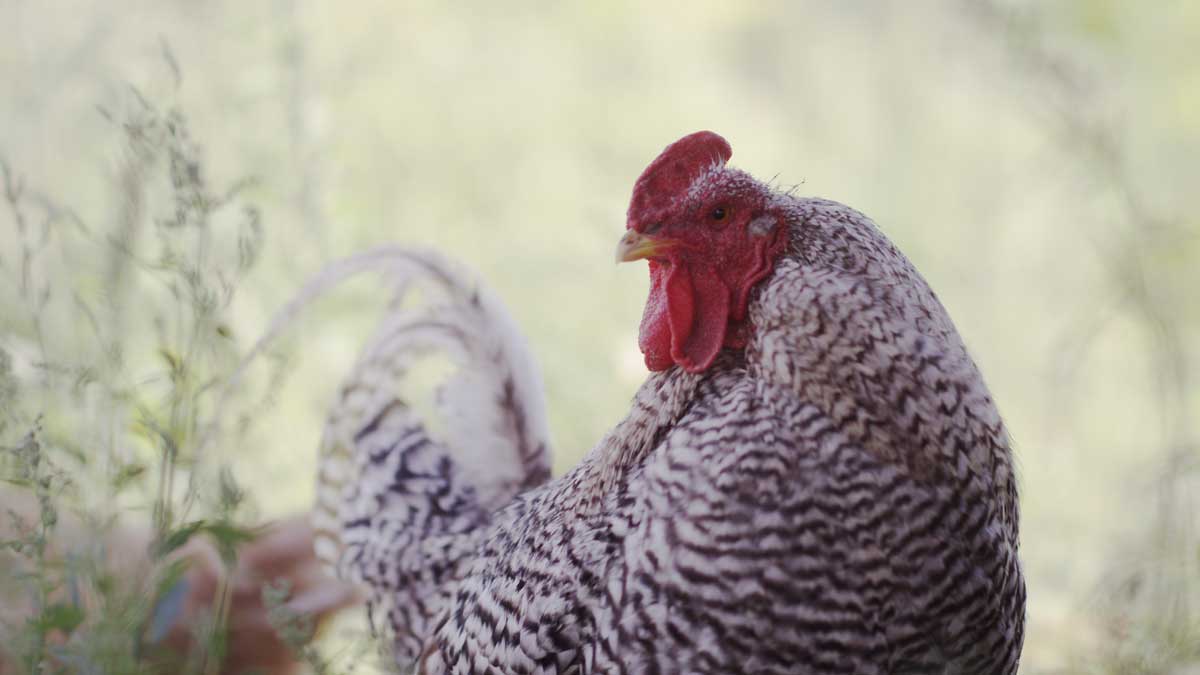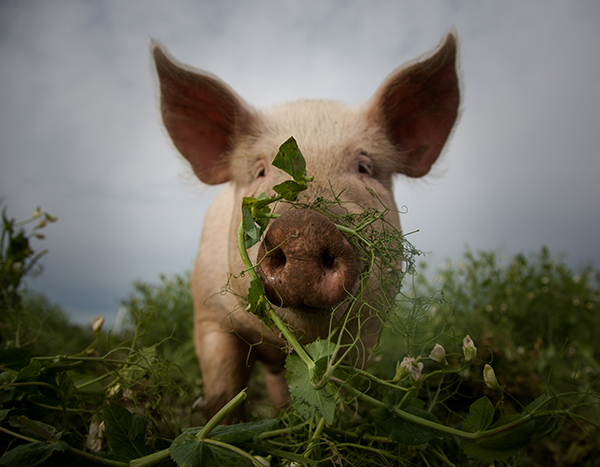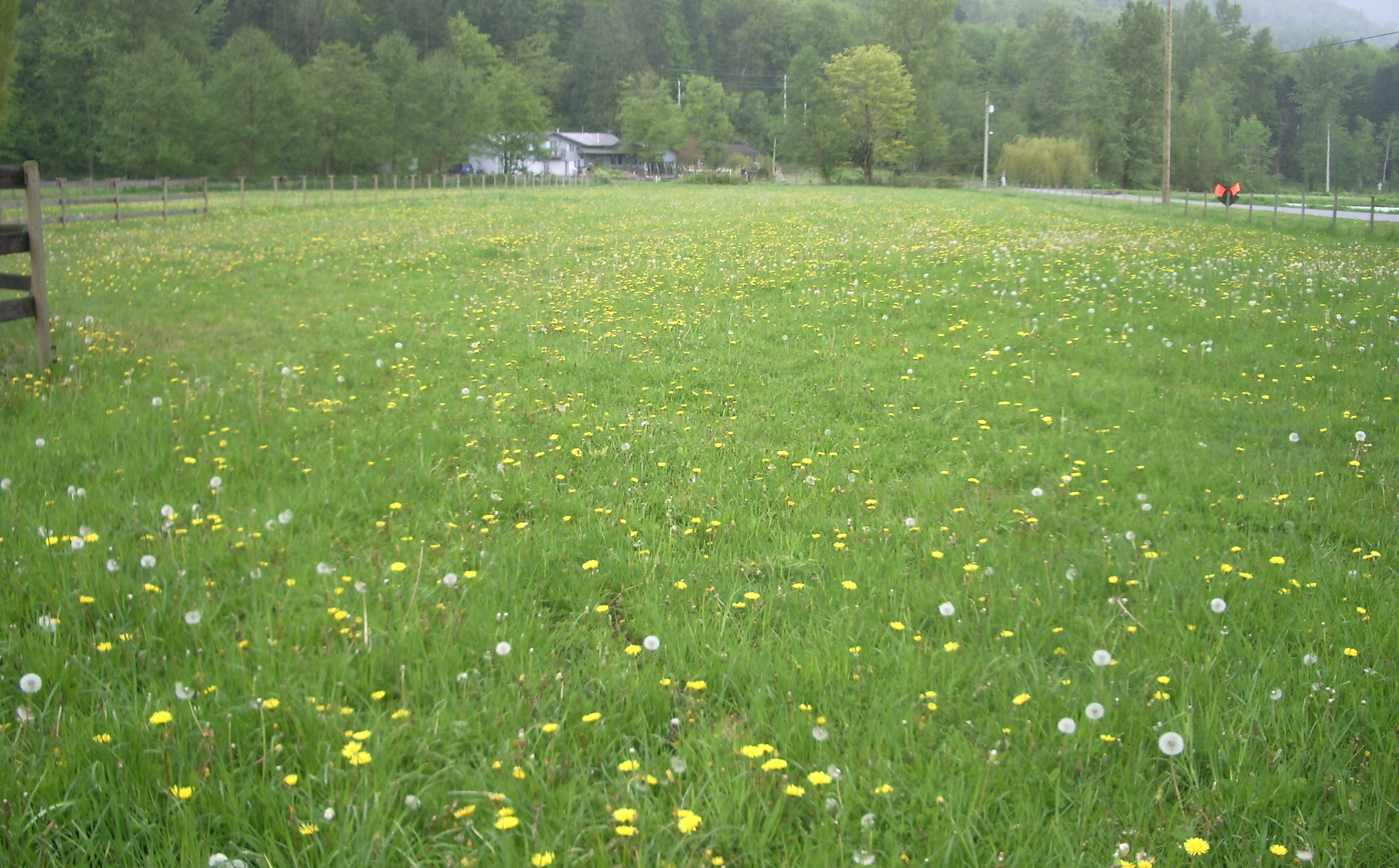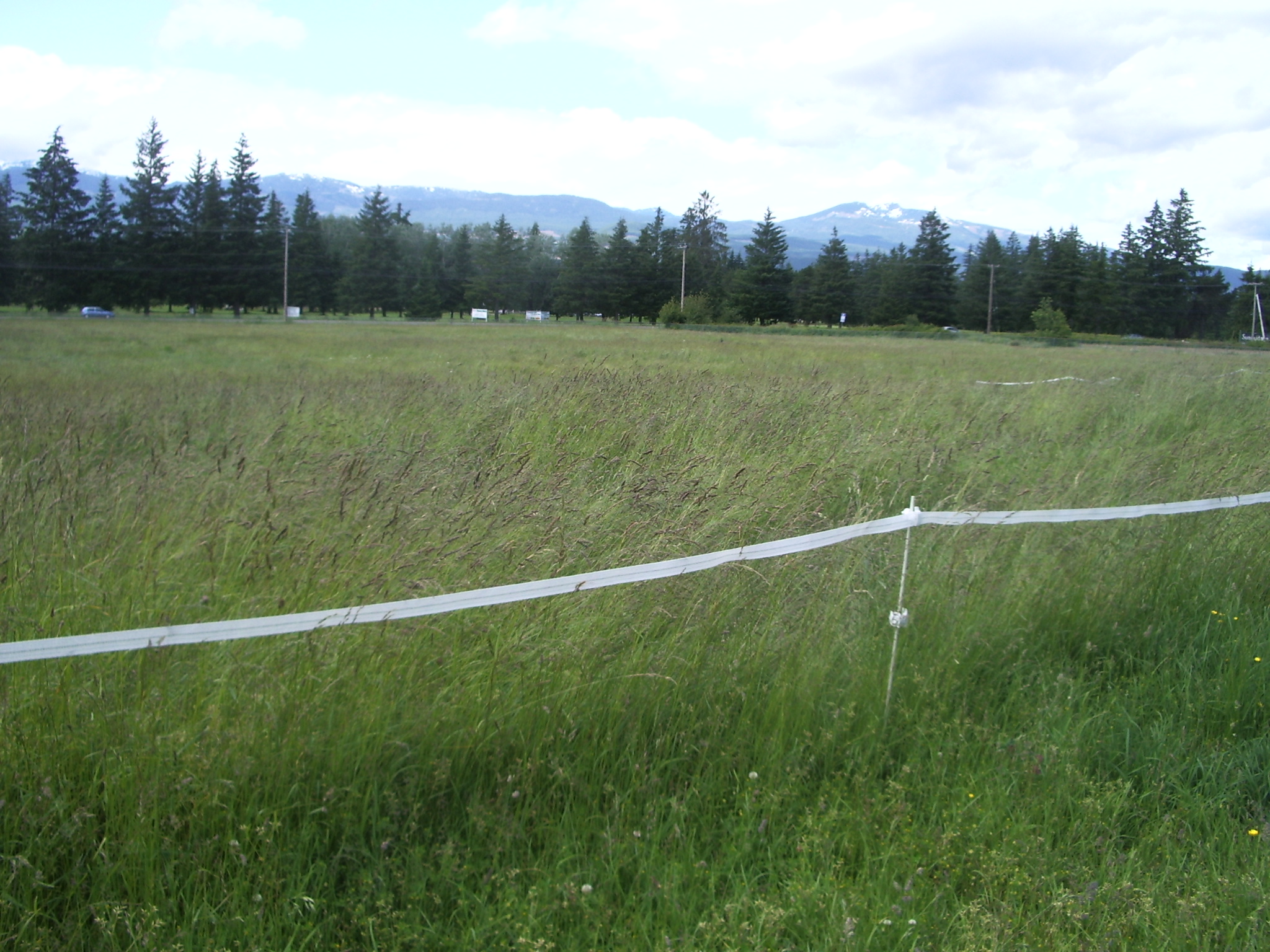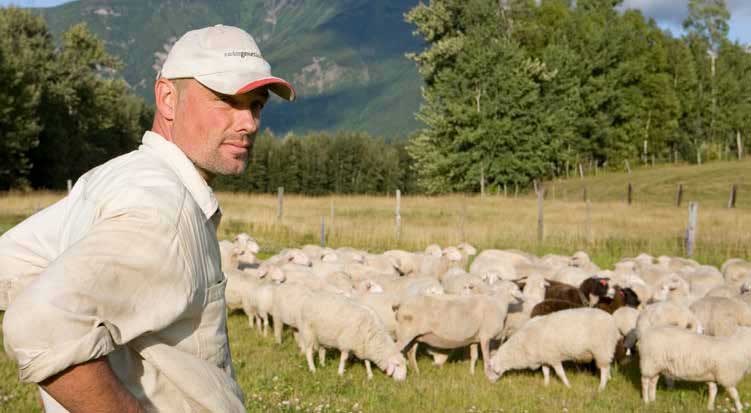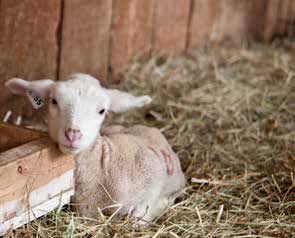Bringing Plants and Animals Together for Soil Health
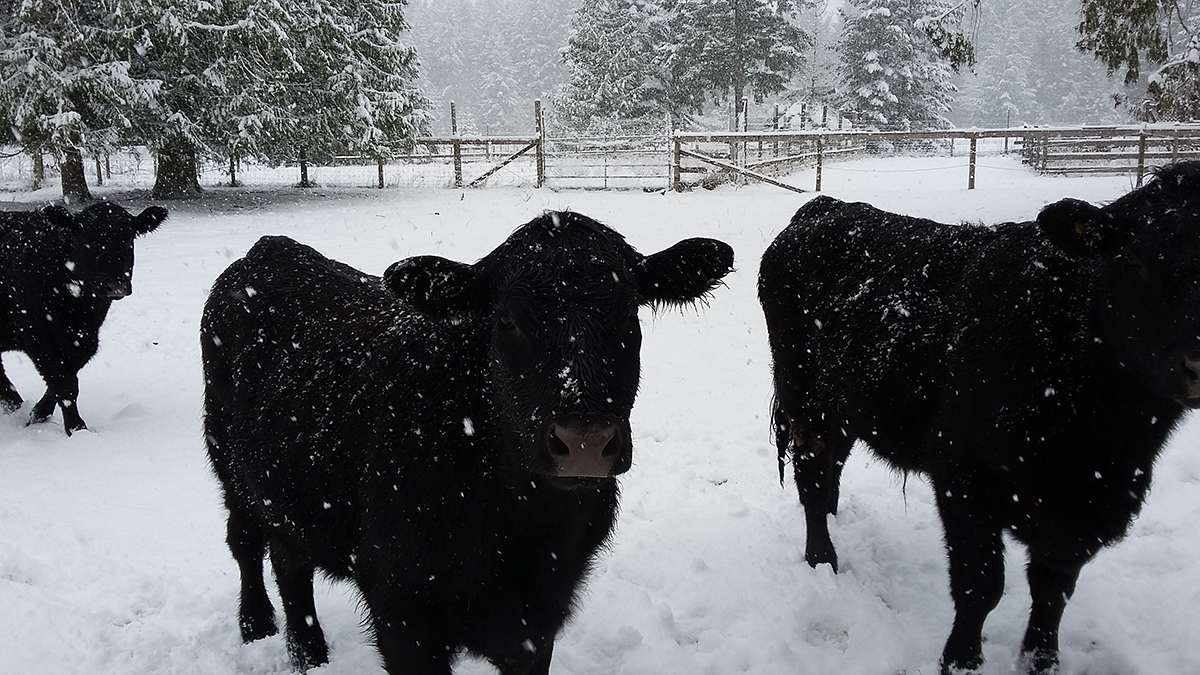
Crop-Livestock Integration at Green Fire Farm
DeLisa Lewis, PhD
What do the North American Dust Bowl of the 1930s and the current global experiences of climate change have in common? Of course, both are understood as environmental disasters with humans as major contributors. But, if you answered with either ‘farmers’ or ‘soils,’ or more ideally, both, you’d be hearing a celebratory ding-ding-ding right about now.
For farmers and their soils, however, the ‘answers,’,in the form our day-to-day management are not so simple. Environmental historians have uncovered a picture of the Dust Bowl that is also less simple than the above equation, (e.g. Worster, D. 2004; Cunfer, 2004). True to the story I would like to tell here, these historians do focus on some of the challenges of long-term management of soils. Geoff Cunfer, an environmental historian of the Great Plains, found just how much ‘manure matters’ and asserted, “Through 10,000 years of farming on five continents by hundreds of diverse human cultures, only a handful of solutions to soil fertility maintenance have emerged” (Cunfer, 2004: p. 540).
What I’ve learned from reading environmental and agricultural history accounts, as well as reviewing the findings from long-term agricultural research studies1 is that careful, and regionally specific considerations of soils and climates are key nodes for fine-tuning systems. Perhaps more importantly, farming operations, including organic ones, have become increasingly specialized with livestock and manure here and vegetables over there. The lessons from history and long-term agricultural research, point towards diversity, and combined strategies for soil fertility or soil health.
I did not reach a place of digging around the archives or agriculture research station reports until I had close to 15 years of practice with soil management on certified organic vegetables farms. My farming systems experience to that point was within specialized, vegetables-only operations where I managed the soil preparation of the fields as well as windrows of compost with the front-end loader on my tractor.
When I arrived in British Columbia to learn more about the science behind soil management practices, some of the immediate lessons learned centered on the very different soil types, climate characteristics, and economic and cultural realities here. I now have just over a decade of ‘living here’ experience in the Coast-Islands region of BC, and am moving into year five operating our family-owned farm in the Cowichan Valley. That background is meant to highlight that I am still learning, and what I want to share for the purposes of this article on soil health and climate change, is my journey so far with integrating livestock with vegetables on Green Fire Farm.
Although coping with ‘too much and too little’ available water is not new to farmers in the Coast-Islands regions of BC, frequent and extreme weather events do present a new set of challenges. Faced with the demands of producing high quality product in competitive markets, and rising costs for farm inputs, we decided to pursue a number of different strategies to meet the goals of farm profitability, risk reduction, and (my personal favourite) soil health.2 The overall strategy is diversification, both in the fields and in terms of different revenue streams for the farm.
The soils and climate of our farm are well suited to a mixed farming operation, with Fairbridge silt loam soils3 and a Maritime Mediterranean climate. The soil landscape would be described as ‘ridge and swale’, with differing slopes and mixed drainage patterns interspersed through the fields. The drainage limitations of these soils and the erosion prone sloping areas are key pressure points for early spring and late fall field soil preparations. Though I have attempted to address some of these potential challenges to soil health with carefully timed tillage,4 and the use of a spader to reduce mechanical disturbance, the loss of production from one to two weeks at both ends of the growing season can be a costly hit to our farm profitability.
With that in mind, I see necessity as a driver with my decision-making around farm enterprise diversification. I did not arrive on our farm in the Cowichan with all the knowledge or skills required to integrate livestock with our vegetable production, but I did arrive with a keen interest in learning what mix of systems could optimize the opportunities and limits of our farm’s unique mix of soils, climate, and markets. Nearly five years in, we grow and sell a diverse mix of annual vegetables, perennial fruits, hay, and pastured pork. In recognition of the limits to my own management capacity, the addition of each new layer of complexity to the system is small and incremental.
I braved the unknowns of bringing in weaner piglets in the first season because we did not have enough irrigation water at that time to set up the vegetable systems that were most familiar to me. We began our learning with pastured pig systems with a total of eight piglets.
Last spring, we found another certified organic farm in our valley who were ready to sell their small herd of four lowline Angus beef cows. With their mentorship and guidance, I’ve added a system of ‘modified’5 intensive grazing to our pastures. In addition to purchasing the cows, our investments were increases to our electric fencing equipment used with the pigs, additional livestock watering tanks, and a used set of haying equipment.
This spring, I plan to set up smaller paddocks using the electric fencing where I want the cows to terminate the overwintered cover crops. This would be my ‘holy grail’6 system for putting in practice both soil health principles and climate friendly strategies, and much additional research will be needed to evaluate the return on investment and to quantify the contributions to soil health or climate impacts mitigation.
Currently, I have more questions than answers with respect to a full assessment of how this crop-livestock integration performs on our farm. As one part of our response to that, we will be expanding our record-keeping systems in an effort to learn our way towards an evaluation. Connecting our farm efforts to the work of others as recorded in the pages of this magazine, Corine Singfield7 and Tristan Banwell8 are both carrying out promising on-farm research focusing on livestock integration and MIG. Stay tuned for more details!
DeLisa has two decades of experience managing certified organic mixed vegetable production systems. She was lead instructor for the UBC Farm Practicum in Sustainable Agriculture from 2011-2014, and her teaching, research, and consulting continue with focus areas in soil nutrient management, farm planning, and new farmer training. Her volunteer service to the community of growers in British Columbia includes membership on the COABC Accreditation Board and North Cowichan Agriculture Advisory Committee.
Endnotes
1. Examples of long-term agricultural research include > 100 years at Rothamstead in the U.K., Morrow plots and Sanborn Field (USA), > 40 years at the Rodale Farming Systems trial
2. See the ‘science of soil health’ video series published by the USDA NRCS, 2014
3. See the BC Soil SIFT tool for mapped and digitized information on your soil types and agricultural capability
4. Conservation tillage is recognized as a ‘climate friendly’ and soil health promoting practice, and there are many variations on that theme as farmers and farming systems. I use the term ‘careful’ tillage to emphasize attention to monitoring soil moisture conditions to reduce soil physical and biological impacts, and as an overall effort to reduce the number of passes with machinery. Not to be missed, in a discussion of soil health and climate friendly farming practices, are two recently published growers focused books on the no-till revolution in organic and ecologically focused farming systems. See what Andrew Mefford and Gabe Brown have to say in the recent issue of ‘Growing for Market’ magazine.
5. Management Intensive Grazing defined as emphasizing ‘the manager’s understanding of the plant-soil-animal-climate interface as the basis for management decision’ in Dobb, 2013 is a promising, climate friendly practice for BC growers. I use the term ‘modified’ to signal that I have not yet achieved the daily moves or high intensity stocking numbers often associated with MIG. Our paddock rotations have evolved to reflect our immediate needs for lower labour inputs and less frequent moving of the animals with their paddocks.
6. See Erik Lehnhoff and his colleagues’ (2017) work in Montana for an interesting review of livestock integration and organic no-till in arid systems.
7. See Corine Singfield’s article on integrating pigs and chickens into crop rotations in the Winter 2016 issue of the BC Organic Grower.
8. See Tristan Banwell’s article on Managed-intensive grazing in the Winter 2018 issue of the BC Organic Grower.
References
Badgery, W., et al. (2017). Better management of intensive rotational grazing systems maintains pastures and improves animal performance. Crop and Pasture Science.68: 1131-1140. dx.doi.org/10.1071/CP16396
Bunemann, E.K., et al. (2018). Soil quality – a critical review. Soil Biology and Biochemistry. 120:105-125. doi.org/10.1016/j.soilbio.2018.01.030
Cunfer, G. (2004). Manure Matters on the Great Plains Frontier. Journal of Interdisciplinary History. 34: 4 (539-567).
Dobb, A. (2013). BC Farm Practices and Climate Change Adaptation: Management-intensive grazing. BC Agriculture and Food Climate Action Initiative. deslibris-ca.ezproxy.library.ubc.ca/ID/244548
Lehnhoff, E., et al. (2017). Organic agriculture and the quest for the holy grail in water-limited ecosystems: Managing weeds and reducing tillage intensity. Agriculture. 7:33. doi:10.3390/agriculture7040033
Pan, W.L., et al. (2017). Integrating historic agronomic and policy lessons with new technologies to drive farmer decisions for farm and climate: The case of inland Pacific Northwestern U.S. Frontiers in Environmental Science. 5:76. doi:10.3389/fenvs.2017.00076
Richards, M.B., Wollenberg, E. and D. van Vuuren. (2018). National contributions to climate change mitigation from agriculture: Allocating a global target, Climate Policy. 18:10, 1271-1285, doi:10.1080/14693062.2018.1430018
Telford, L. and A. Macey. (2000). Organic Livestock Handbook. Ontario: Canadian Organic Growers.
Worster, D. (2004). Dust Bowl: The southern Plains in the 1930s. New York: Oxford University Press.
Province of British Columbia, Environment, M. O. (2018, May 09). BC Soil Information Finder Tool. gov.bc.ca/gov/content/environment/air-land-water/land/soil/soil-information-finder
Explore the Science of Soil Health. (2014). USDA National Resources Conservation Service. nrcs.usda.gov/wps/portal/nrcs/detail/national/soils/health/?cid=stelprdb1245890
Singfield, C. (2016). Integrating Livestock into Farm Rotations. BC Organic Grower. bcorganicgrower.ca/2016/01/integrating-livestock -in-the-farm-rotations/
Banwell, T., Tsutsumi, M. (2018). Organic Stories: Spray Creek Ranch. BC Organic Grower. bcorganicgrower.ca/2018/01/organic-stories-spray-creek-ranch/


